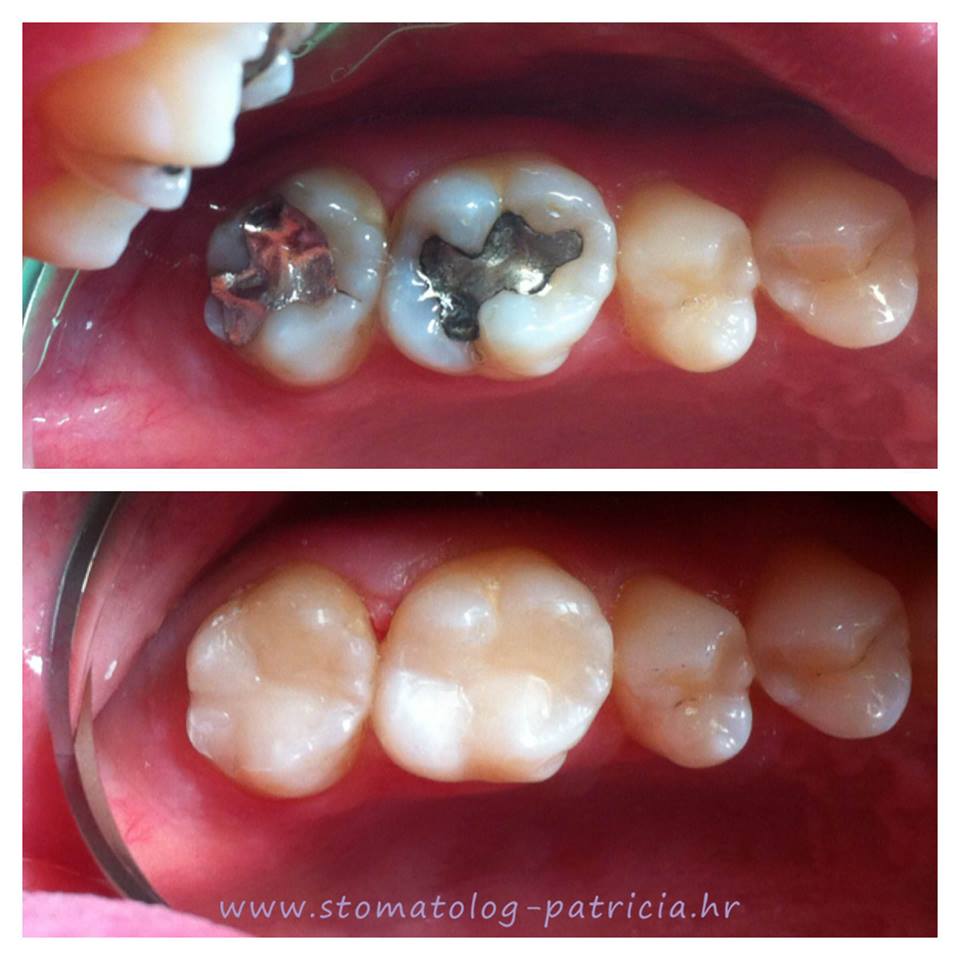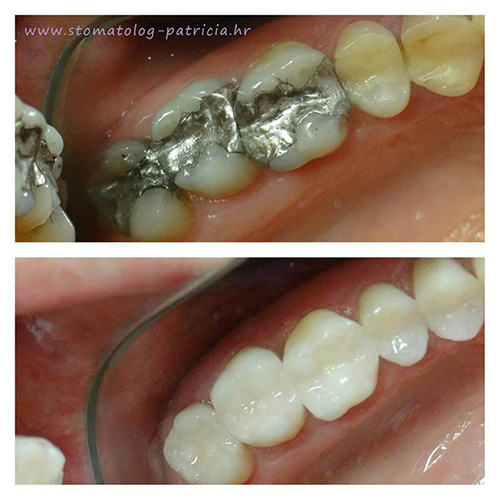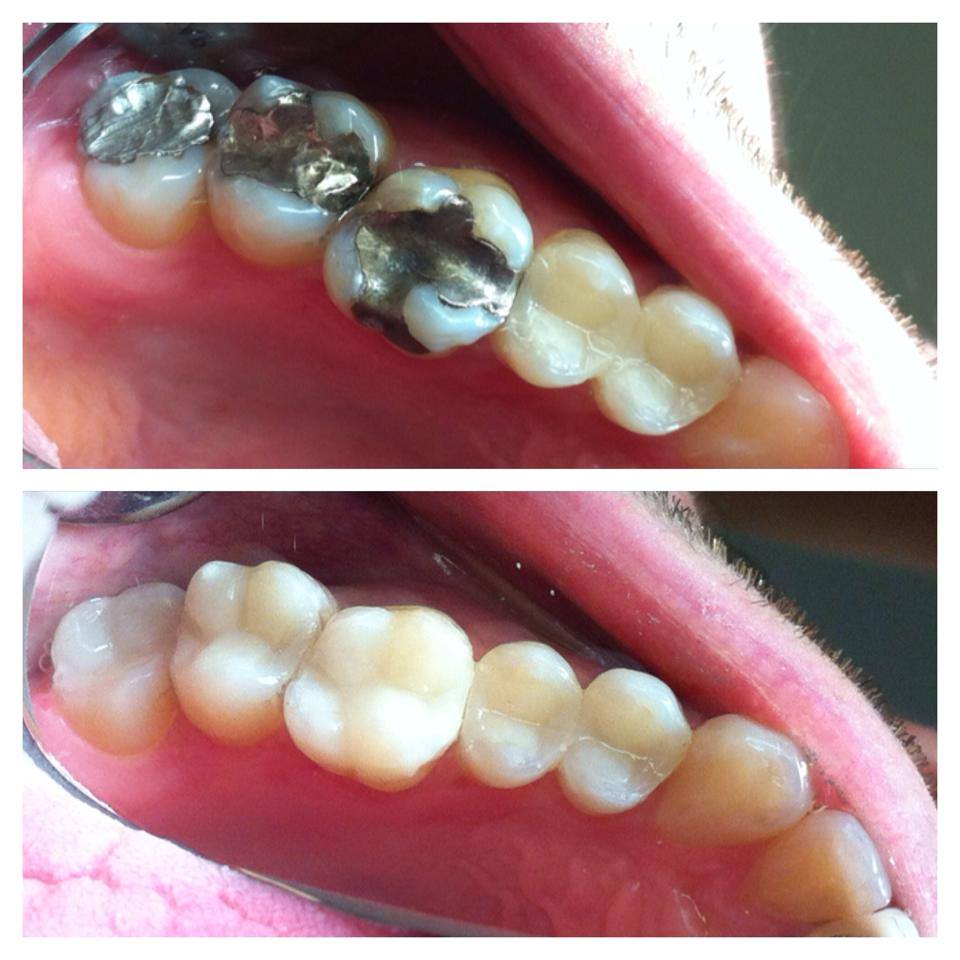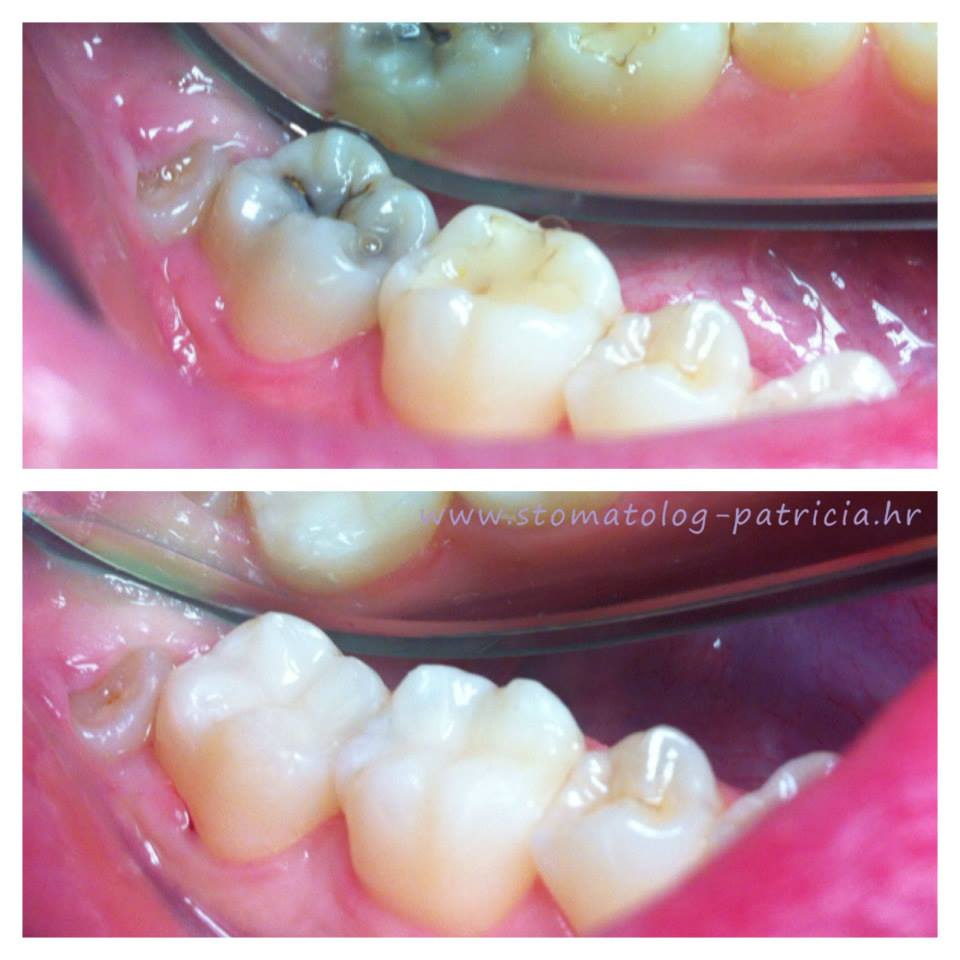COMPOSITE FILLINGS AND INLAYS
What is dental filling?
The composite filling procedure is a minimally invasive dental treatment which is used to restore minor fractures caused by trauma or decayed portions of teeth which need to be removed.
What is the difference between composite fillings and inlays?
Both composite fillings and inlays are types of aesthetic fillings which differ according to types of materials they are made from and their fabrication methods.
Composite (white) fillings are made directly in the dental office and they represent the most common dental treatment. They have almost completely replaced amalgam fillings (dark, silver fillings). As opposed to extensive drilling in the case of amalgam fillings, composite fillings require minimal removal of the decayed tissue because they are bonded to dental hard tissues micromechanically and chemically. Using the adequate colour and type of material for the composite filling which closely resemble the appearance of the natural tooth, it is possible to achieve a perfect aesthetic and functional result. Aesthetic composite materials of the highest quality are nowadays also used to correct the imperfections in the smile zone by using a free-hand bonding technique which requires only build-up with no drilling.
Unlike composite fillings, inlays are made of ceramics (ceramic filling). They are indicated in the cases of extensive destruction of posterior teeth (molar, premolars) and represent an ideal solution when we want to treat a deep bite in a minimally invasive way. Inlays are made indirectly in the dental laboratory based on the impressions taken in the dental office. After the final product has been fabricated, it is sent back to the dental office and cemented into a tooth cavity. Due to high-quality materials inlays are made from, they are both functionally and aesthetically superior to composite fillings. Apart from ceramics, gold and composite resin can also be used for making inlays indirectly in the dental office.
When to opt for making dental fillings?
- When there are signs of tooth decay, such as: tooth discoloration, damaged tooth surface, tooth holes, thermal sensitivity (hot, cold) or sensitivity to sweet substances
- When the reconstruction of the tooth by using fillings is necessary: in the case of damaged tooth surface (cervical defects, erosion) and minor tooth fractures or to aesthetically reshape the front teeth
- When the replacement of the old fillings is necessary: if they have changed colour or been damaged, or gained stains at the edges
If you suspect that you have tooth decay, have it checked out by your dentist because it may not cause any pain in the beginning. When your tooth has displayed symptoms such as sensitivity (hot, cold, sweet, bite), it may already be infected which means it will require endodontic treatment.
How long does it take to make a dental filling?
The whole process of making a composite filling takes about 5-45 minutes, depending on the size of the filling.
On the other hand, making an inlay requires 2 visits to the dental office. During the first visit which lasts about 30-60 minutes, the decayed portions are removed and the cavity is formed so that the impressions can be taken and sent to the dental laboratory. In the following visit, the inlay made in the dental laboratory is cemented which takes about 30 minutes to complete.
What to do after making a dental filling?
Immediately after the dental filling procedure, you might feel pain and sensitivity which is a normal reaction especially in case of severe tooth decay. This sensitivity should normally disappear within next few days. If the local anaesthetic has been used (especially in case of mandibular conduction anaesthesia), it is not recommended to eat until the numbness wears off so as not to hurt soft tissues (tongue, lips, cheeks) while chewing.
In which cases should you revisit the dentist after the procedure?
- In case of persisting or increasing tooth pain or hypersensitivity after the dental filling procedure
- If the dental filling feels too high when you bite down or slide your teeth against each other
The longevity of your dental fillings will depend on your lifestyle habits, bite, the condition of other teeth in your mouth and oral hygiene. The teeth restored with dental fillings should be maintained in the same way as natural teeth, by practising good oral hygiene every day. Regular check-ups are also necessary.
Why choose to make dental fillings in OUR practice?
- We have 17 years of experience in making dental fillings.
-
We try to make you feel comfortable and relaxed in our clinic,without any fear.
-
Each dental filling, whether produced in a dental office or laboratory will be morphologically and aesthetically perfect to blend in with your natural teeth.
-
Inlays (ceramic fillings) are made from the highest quality materials in cooperation with a renowned prosthetic laboratory.
-
The work in your mouth will be painless and safe, we will do our best to make it as comfortable as possible and our service as good.
-
The price of a dental filling will include the local anaesthetics, a temporary filling and a check-up.
-
Your “before and after“ photos of the dental fillings will be preserved.
-
At any moment we are available to you for advice and consultation via mobile phone, e-mail and social media.
-
We try to keep our appointments.
-
You can pay in cash, but also in interest free instalments: American Express up to 12 instalments, Diners up to 6 instalments, Erste & Steiermärkische bank Maestro and MasterCard up to 12 instalments.
-
There is free parking in front of the practice.
If we meet your criteria, feel free to contact us and make an appointment.
If these pages do not provide you with an answer to your question on dental fillings, dental health and dental services, feel free to contact us.
We are at your disposal!
| Radno vrijeme
PON, SRI, PET 9:00-16:00
UTO, ČET 13:30-20:30
☎ +385(0)1 4822 137










